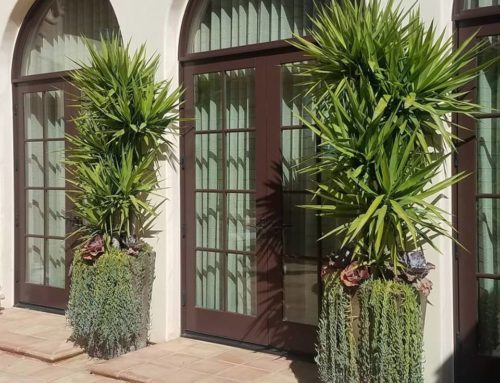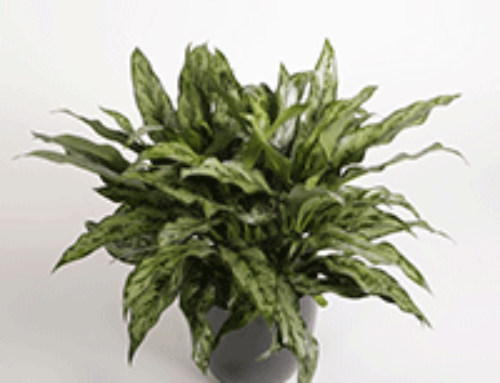Create a sensory delight in your interior plants by incorporating design principles like balance, harmony and rhythm
Do you remember the last time you felt overwhelmed by the beauty of a plant or a plant installation? Creating an interior plant design with balance, harmony, and rhythm can evoke an emotional response, leaving a long-lasting impression. Whether its making a lasting impression on your house guests or providing a memorable experience for your clients, these principles are fundamental to interior plant design.
Balance
Adding plants to your interior spaces can invoke a sense of balance from the outside environment, full of trees and foliage. Interior plants can also add a sense of balance to the interior aesthetic. Bright floral plants add a pop of color to a boring entryway, or a large palm can add a sense of tropical paradise to an empty corner. Plants can expand limited spaces by creating visual interest.
At the same time, too many plants will detract from the space. Just the right amount, a balance of plants, can achieve a beautiful partnership though. Limiting your plant varieties to four or five will achieve a repetitive rhythm throughout a space without overwhelming.
Harmony
Not only can interior plants help you feel in harmony with nature, but a study by Dr Etcoff at Harvard Medical showed that people feel more at ease with each other when interior flowers/plants are present in their environment. As it relates to scale, or height and size, plants unify the architectural elements of a building, space or a room.
Rhythm
Consider the building or the room when deciding what kind of plants/containers to use, and where they will be placed. Look carefully at the structural design, the shapes of walls and corners, the furniture, and even the traffic flow patterns. Strong features require larger scale plants with large decorative pots to command attention with their height and dramatic foliage. Focal plants should be larger in scale and placed strategically with smaller plants leading the eye to the major pieces. Naturally, smaller scale areas need smaller scale plants with smaller sized containers. In general, all of the plantings and their pots should be scaled to the building and the atmosphere of the room.
Lastly, layering or multi-planting containers provides opportunities to show off texture, color, and depth. Choosing plants that enhance our senses of touch, smell, and sight increase the overall sensory delight. By adding groundcover plants to your focal pieces, you can weave a textured tapestry with variegated foliage and color interest. This can increase the interest factor with structure in your planting that draws the eye to a particular area.
The Experts
Plantopia’s well-designed interiorscapes help create “moods” with light and dark, soft and strong shapes. In the end, we want you to be able to sit back and simply enjoy your interior plant design!
Plantopia’s Expert Plant Technicians take their jobs very seriously knowing only that the most important goal is to make you feel perfectly contented. For design consultation or questions, please contact us!









